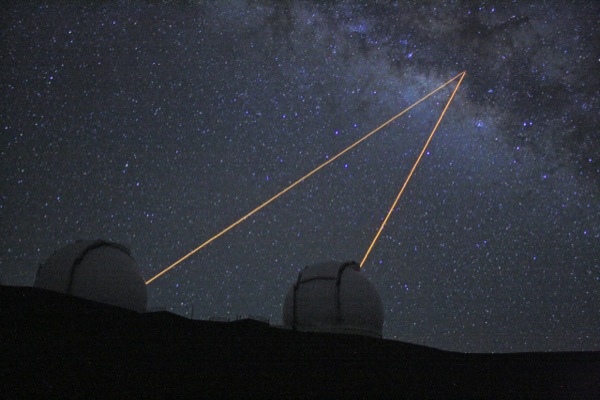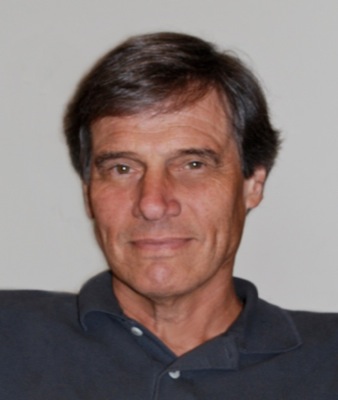Black hole lecture
Oct. 25 Vernon Lecture focuses on mystery at center of Milky Way
11:48 a.m., Sept. 11, 2012--High-powered telescopes are unveiling a big mystery shrouded in dust and sitting right smack in the middle of our Milky Way Galaxy. Stars are orbiting something — at a dizzying pace of up to 3,000 miles per second — and some of those stars have vanished.
“It’s a giant black hole,” says Mark Morris, a physicist at the University of California, Los Angeles (UCLA), who has been observing it with the two telescopes of the W.M. Keck Observatory in Hawaii.
Research Stories
Chronic wounds
Prof. Heck's legacy
In the super-dense environment in a black hole, gravity is so great that nearby matter gets sucked inside, and even light can’t get out. Time also is believed to almost stand still inside these “bottomless pits.”
Morris and his colleagues have seen material falling into the black hole at the center of the Milky Way. As this matter gets compressed, it gets hot and radiates energy — sometimes generating tremendous flares — that instruments like the Keck telescopes can detect.
“It’s been putting on a light show for us as we watch it,” Morris notes.
Morris will share his fascinating findings at this fall’s Harcourt C. (Ace) Vernon Memorial Lecture at the University of Delaware. His talk, “The Black Hole at the Center of Our Milky Way Galaxy — A Slumbering Giant,” is set for Thursday, Oct. 25, beginning at 7:30 p.m. at UD’s Clayton Hall Conference Center. The lecture is free and open to the public. To ensure seating for this popular event, please register in advance at this website.
Morris, a professor in the Department of Physics and Astronomy at UCLA since 1983, aims to understand the Milky Way’s innermost regions, which he describes as “an extreme environment filled with stars, gas, high energy and strong magnetic fields that gives rise to phenomena not seen elsewhere, from colliding stars to a central, super-massive black hole.”
His research is largely observational and has been carried out at all wavelengths, from radio to X-rays. He also frequently has pursued computational theoretical explorations of various astrophysical phenomena.
A prolific writer, Morris has authored or co-authored 386 publications, including 235 scientific papers, five comprehensive review articles and three books.
The Vernon Memorial Lecture, held annually at UD, is sponsored by the University’s Delaware Asteroseismic Research Center and the Mount Cuba Astronomical Observatory in Greenville, Del. The lecture honors the late Harcourt C. (Ace) Vernon (1907–1978), who was one of the observatory’s founders and the first chairman of its board of trustees.
Article by Tracey Bryant












